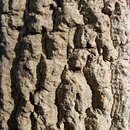en
names in breadcrumbs


Endiandra is a genus of about 126 species of plants, mainly trees, in the laurel family Lauraceae. They are commonly called "walnut" despite not being related to the Northern Hemisphere walnuts (Juglans spp.) which are in the family Juglandaceae.
Shrubs and trees with lauroid leaves mostly, with bisexual flowers, usually with a large edible berry ovoid or globose, and seated directly on the pedicel. The seeds are dispersed by animals and birds. They have a broad distribution across South East Asia, Australia and into the western Pacific Ocean.[1]
Endiandra is a genus of evergreen trees belonging to the Laurel family, Lauraceae. Fossils show that before glaciations, when the climate was more humid and mild, species were distributed more widely. They are distributed in Asia, from India to Indochina, China, Malaysia, Australia, and Pacific islands, with 38 species endemic to Australia.
In Australia, they are often used as screen trees due to the thick foliage of a number of their species. Quite a few of the Australian species are rare, such as Endiandra globosa, Endiandra muelleri subsp. bracteata and Endiandra floydii.
The drying of the area during the glaciations caused Endiandra to retreat to the mildest climate refuges, including oceanic and southern islands and wetter mountain areas. With the end of the last glacial period, Endiandra recovered some of its former range. They are mostly relicts of a type of vegetation disappeared, which originally covered much of the mainland of Australia, South America, Antarctica, South Africa, North America and other lands when their climate were more humid and warm. Although warm Cloud forests disappeared during the glaciations, they re-colonized large areas every time the weather was favorable again. Most of the cloud forests are believed to have retreated and advanced during successive geological eras, and their species adapted to warm and wet gradually retreated and advanced, replaced by more cold-tolerant or drought-tolerant sclerophyll plant communities. Many of the then existing species became extinct because they could not cross the barriers posed by new oceans, mountains and deserts, but others found refuge as species relict in coastal areas and Islands.
Some species are well adapted to tropical dry or deciduous forests, including monsoon forests and dry monsoon forest. Some Endiandra present a convergent evolution due to ecological or physical drivers toward a similar solution, including analogous structures with species adapted to different environments, for example with plants adapted to Laurel forest habitat. These Endiandra resemble other genera in the family Lauraceae, and their leaves are lauroid type with berries eaten and dispersed mostly by birds. Others are even adapted to very wet media.
Some species are endangered and others have a very specialized ecological niche and consequently occupy small or specific areas. Although the majority of the species are the products of parapatric speciation, some groups have an ancient Gondwanan distribution and some groups responded to favourable climatic periods as opportunistic species and expanded across the available habitat, these last groups occur across wide distribution with close relatives and few species, indicating the recent divergence of these species.
Many species are having edible fruits. Some birds and bats that are specialised frugivores tend to eat the whole fruit and regurgitate seeds intact, which functions for Biological dispersal. Others swallow the fruit and pass the seed intact through the gut. An incomplete list of birds that rely heavily on the fruit for their diet include members of the families Cotingidae, Columbidae, Trogonidae, Turdidae, and Toucan. The fruits are an important food source for Palaeognathae highly dependent. Seed dispersal of various species in the genus is also carried out by fishes and big and small mammals as Pachyderms, Bovids, monkeys, arboreal rodents, porcupines, or possums.
There were 126 accepted species as of May 2021.[2] These are:
Endiandra muelleri bracteata leaves
Large fruit of Endiandra globosa
Small tree of Endiandra introrsa
Endiandra is a genus of about 126 species of plants, mainly trees, in the laurel family Lauraceae. They are commonly called "walnut" despite not being related to the Northern Hemisphere walnuts (Juglans spp.) which are in the family Juglandaceae.